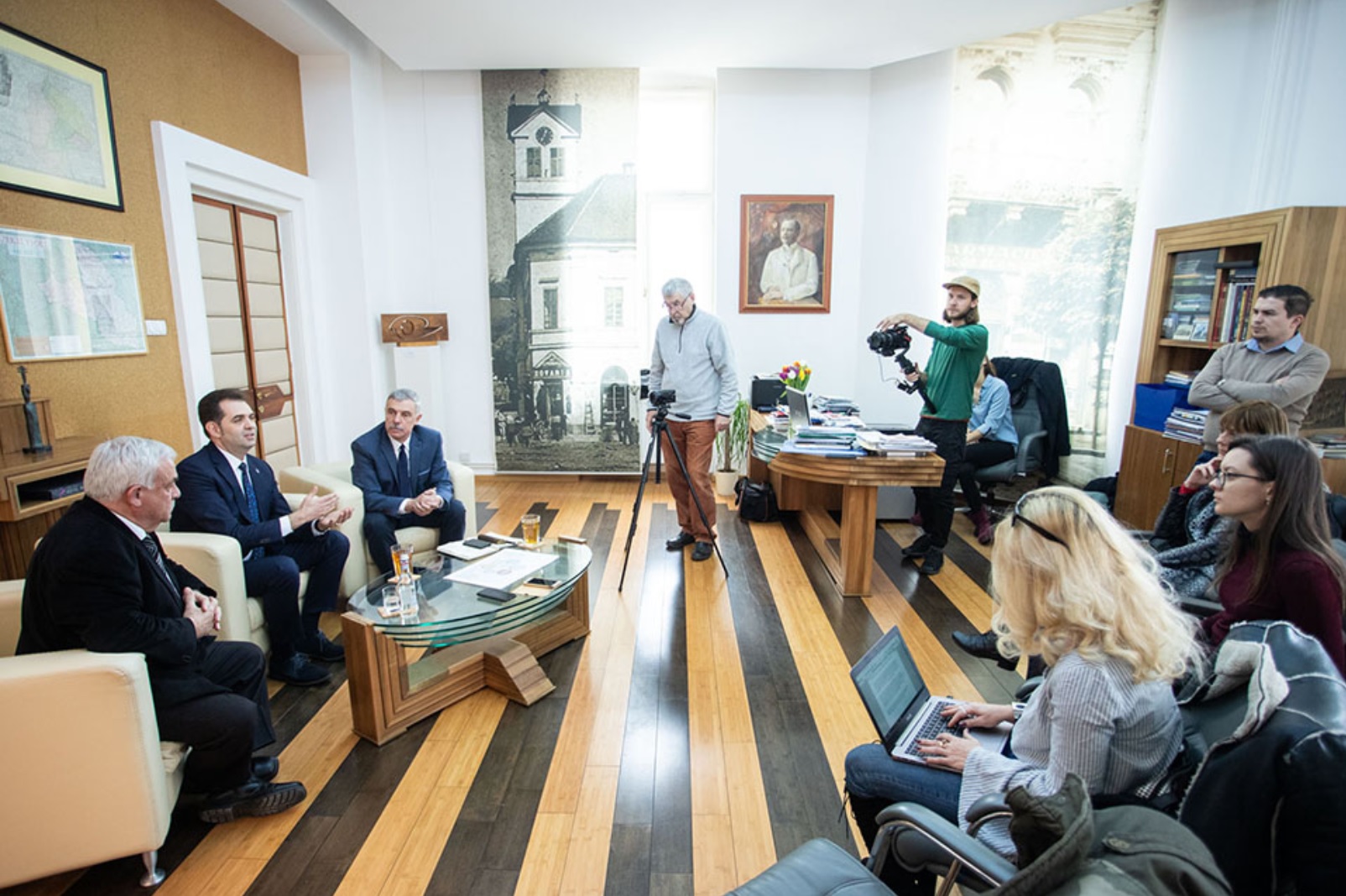The City Council of Sepsiszentgyörgy/Sfântu Gheorghe, together with the Kovászna/Covasna County Council and the Sapientia Foundation, is planning to build Romania’s most modern cultural center in the city. The center would host six different cultural institutions in the same place, including a state-of-the-art concert hall, said the heads of the three organizations involved at their joint press conference last Friday in Sepsiszentgyörgy.
The mayor of the town, Árpád Antal, stated that the new complex is going to be built in the city center on the ruins of the old Bodok Hotel and the surrounding buildings. An architectural plan has already been ordered from Gábor Zoboki and his team and will be shown to the public on March 14. Gábor Zoboki is the architect who designed the Palace of Arts Budapest, the Hungarian capital’s leading concert hall, which opened its doors fifteen years ago and won an “architectural Oscar,” the FIABCI Prix d’Excellence, one year later.
According to Mayor Antal, the new cultural center in Sepsiszentgyörgy will include a concert hall with the best acoustics in the country and will also house the following five institutions: the Transylvanian Art Center, the Péter Bod County Library, the Áron Tamási Theatre, the Cimborák Puppet Theatre and the M Studio Movement Theatre.
According to the mayor, the cultural center should be finished by 2024. As a first step, the city council is going to create the structural and land-use plan, while the city, county council and Sapientia Foundation will sign an association contract about the building of the new cultural center.

Kovászna County Council President Sándor Tamás mentioned that Sepsiszentgyörgy and Kovászna County have been undertaking extra tasks in the interest of the cultural life and sports for the entire Transylvanian Hungarian community. This is the reason why, for example, they previously founded the Transylvanian Art Center as well.
Reformed Bishop Béla Kató – also President of the Sapientia Foundation – explained that the Sapientia Foundation is one of the most legitimate among Transylvanian Hungarian institutions because it was created by eight bishops of the four historical Hungarian churches in Transylvania. He also mentioned that after being involved in the operation of the Transylvanian Hungarian Universities financed by the Hungarian government, they decided to now take part in this cultural project as well.
According to the bishop, the fourth campus of the Sapientia Hungarian University of Transylvania will be in Sepsiszentgyörgy. Besides its current agronomy faculty, a forest engineering faculty will also begin this fall, and preparations for a physical education faculty have begun as well. The foundation has already bought 12 hectares of land in Sepsiszentgyörgy where the Sapientia campus will be built.
Bishop Béla Kató also talked about the exodus of youth towards Western Europe and mentioned that they cannot be expected to stay or move back home unless attractive possibilities are offered to them in their homeland. He further added that the planned projects in Sepsiszentgyörgy aim to motivate youngsters to stay and start their life at home instead of moving away to other countries.
Title image: The abandoned building of the Bodok Hotel in Sepsiszentgyörgy where the new cultural center will be built. The town’s symbol, the statue of the dragon slayer Saint George, is in the foreground. (Photo: Zsolt Kovács/maszol.ro)